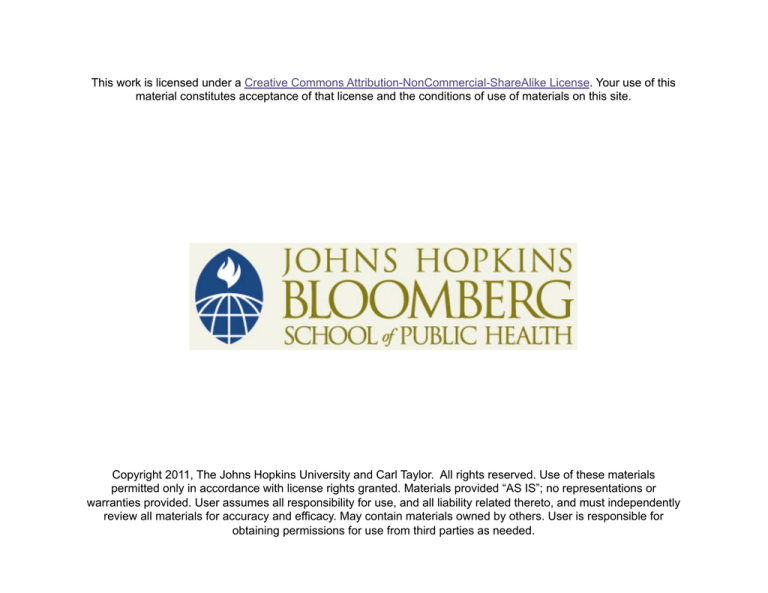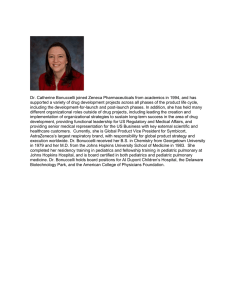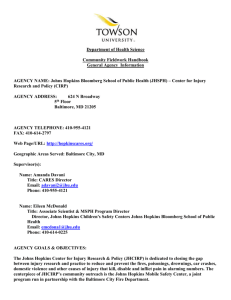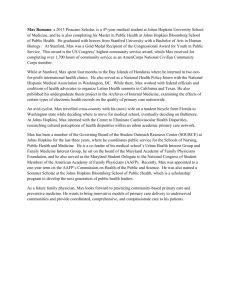
This work is licensed under a Creative Commons Attribution-NonCommercial-ShareAlike License. Your use of this
material constitutes acceptance of that license and the conditions of use of materials on this site.
Copyright 2011, The Johns Hopkins University and Carl Taylor. All rights reserved. Use of these materials
permitted only in accordance with license rights granted. Materials provided “AS IS”; no representations or
warranties provided. User assumes all responsibility for use, and all liability related thereto, and must independently
review all materials for accuracy and efficacy. May contain materials owned by others. User is responsible for
obtaining permissions for use from third parties as needed.
Section C: Balancing the Different Dimensions and
Outcomes of PHC Field Research
Robert Parker, MD, MPH
Johns Hopkins University
Dimensions of PHC Field Research
3
Balancing Different Dimensions of PHC Field Research
Objectives
Design
Implementation
4
Balancing Different Dimensions of PHC Field Research
Objectives
Design, management,
and evolution of
interventions
Cost, effectiveness, and
replicability
5
Balancing Different Dimensions of PHC Field Research
Priorities and needs
Level of involvement,
control, and empowerment
Sustainability
Use of controls and other
ethical issues
6
Dimensions of PHC Field Research
7
The Narangwal Experience
Started with clear external research objectives
Services were not static but evolved over the life of the project
Design: workers per experimental cell the same, interventions
varied
Community involved from the beginning
8
Experimental Cells
No
health
care
Health
care
No nutrition
Nutrition
CONT-N
NUT
Ghuman
Jane
Kalad
Gurum
Bcol
HC
NUTHC of FPCC
Tugal
Rottowal
Mansuran
Rattan
Saya
CONT-P
I-PED
F-PWS
Dangon
Leel
Nangal Kalan
Rajgarh
Barmi
Rajoana-Kafan
Lijtar
Rajoana Khurd
Chomon
Sekha
Uksi-Dudhal
Kishanpura
No women’s services
FPWSCC or NUTHC-P
Ballowal
Child
Chaminda
care
Dhaipee
Dolan Kalan
Women’s services
No
child
care
9
ALRI Deaths in Children: Narangwal Project, 1970–1973
Adapted from Kielmann, A. A. and C. E. Taylor (1983). Child and maternal health services in rural India : The
Narangwal experiment. Baltimore, Published for the World Bank [by] Johns Hopkins University Press.
10
Mortality Rates by Experimental Groups 1970–1973
Control
Health
care
Nutrition
HC+NUT
HC+NUT
+WS
NMR
77.8
46.7
48.3
47.4
63.9
PNMR
52.2
23.3
48.3
33.6
54.2
IMR
129.2
70.0
96.6
81.0
118.1
1-3MR
18.6
11.0
11.0
13.3
7.3
Adapted from Kielmann, A. A. and C. E. Taylor (1983). Child and maternal health services in rural India : The
Narangwal experiment. Baltimore, Published for the World Bank [by] Johns Hopkins University Press.
11
Effects of Interventions
Adapted from Kielmann, A. A. and C. E. Taylor (1983). Child and maternal health services in rural India : The
Narangwal experiment. Baltimore, Published for the World Bank [by] Johns Hopkins University Press.
12
Cost-Effectiveness of Different Interventions
Cost per
infant death
averted
Cost per
1–3 year-old
death averted
Cost per cm Cost per % point
of growth by development
36 months
score
Health care
$25
$31
No Effect
No Effect
Nutrition
$36
$72
$30
$14
HC + Nut
$37
$101
$26
$5
Adapted from Kielmann, A. A. and C. E. Taylor (1983). Child and maternal health services in rural India : The
Narangwal experiment. Baltimore, Published for the World Bank [by] Johns Hopkins University Press.
13
Family Planning Services
Adapted from Kielmann, A. A. and C. E. Taylor (1983). Child and maternal health services in rural India : The
Narangwal experiment. Baltimore, Published for the World Bank [by] Johns Hopkins University Press.
14
Family Planning Services
Adapted from Kielmann, A. A. and C. E. Taylor (1983). Child and maternal health services in rural India : The
Narangwal experiment. Baltimore, Published for the World Bank [by] Johns Hopkins University Press.
15
Multiple Outcomes
The Narangwal experience demonstrated the
importance of considering multiple outcomes
when selecting cost-effective services for
integrated community-based primary health care
programs
16




